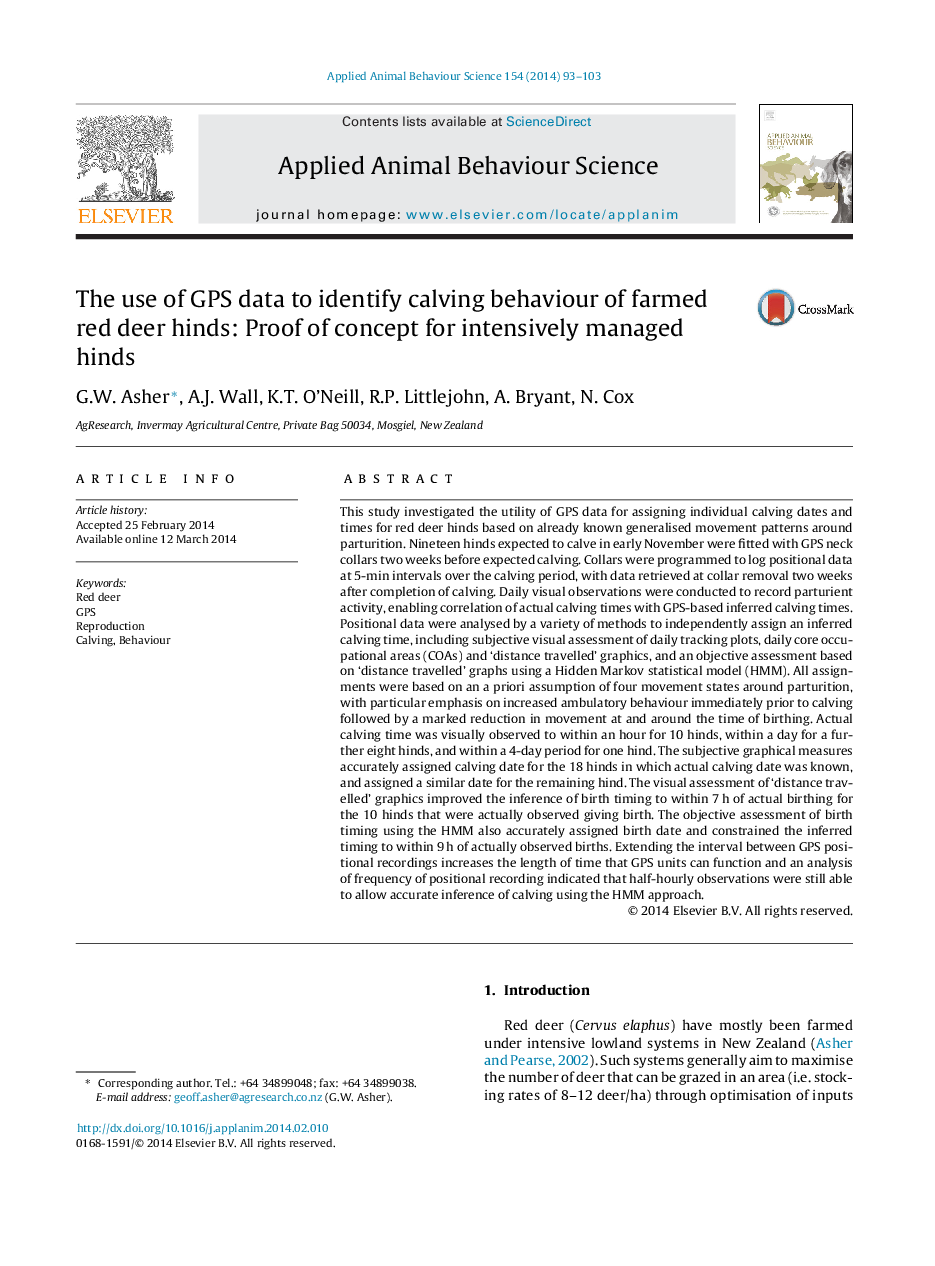| کد مقاله | کد نشریه | سال انتشار | مقاله انگلیسی | نسخه تمام متن |
|---|---|---|---|---|
| 6379701 | 1625352 | 2014 | 11 صفحه PDF | دانلود رایگان |
عنوان انگلیسی مقاله ISI
The use of GPS data to identify calving behaviour of farmed red deer hinds: Proof of concept for intensively managed hinds
ترجمه فارسی عنوان
استفاده از داده های جیپیاس برای شناسایی رفتار گوساله های گوزن های سرخ شده مزرعه ای: اثبات مفهوم برای هزینه های شدید مدیریت شده
دانلود مقاله + سفارش ترجمه
دانلود مقاله ISI انگلیسی
رایگان برای ایرانیان
کلمات کلیدی
گوزن قرمز، جیپیاس، تولید مثل، گوشت، رفتار،
موضوعات مرتبط
علوم زیستی و بیوفناوری
علوم کشاورزی و بیولوژیک
علوم دامی و جانورشناسی
چکیده انگلیسی
This study investigated the utility of GPS data for assigning individual calving dates and times for red deer hinds based on already known generalised movement patterns around parturition. Nineteen hinds expected to calve in early November were fitted with GPS neck collars two weeks before expected calving. Collars were programmed to log positional data at 5-min intervals over the calving period, with data retrieved at collar removal two weeks after completion of calving. Daily visual observations were conducted to record parturient activity, enabling correlation of actual calving times with GPS-based inferred calving times. Positional data were analysed by a variety of methods to independently assign an inferred calving time, including subjective visual assessment of daily tracking plots, daily core occupational areas (COAs) and 'distance travelled' graphics, and an objective assessment based on 'distance travelled' graphs using a Hidden Markov statistical model (HMM). All assignments were based on an a priori assumption of four movement states around parturition, with particular emphasis on increased ambulatory behaviour immediately prior to calving followed by a marked reduction in movement at and around the time of birthing. Actual calving time was visually observed to within an hour for 10 hinds, within a day for a further eight hinds, and within a 4-day period for one hind. The subjective graphical measures accurately assigned calving date for the 18 hinds in which actual calving date was known, and assigned a similar date for the remaining hind. The visual assessment of 'distance travelled' graphics improved the inference of birth timing to within 7Â h of actual birthing for the 10 hinds that were actually observed giving birth. The objective assessment of birth timing using the HMM also accurately assigned birth date and constrained the inferred timing to within 9Â h of actually observed births. Extending the interval between GPS positional recordings increases the length of time that GPS units can function and an analysis of frequency of positional recording indicated that half-hourly observations were still able to allow accurate inference of calving using the HMM approach.
ناشر
Database: Elsevier - ScienceDirect (ساینس دایرکت)
Journal: Applied Animal Behaviour Science - Volume 154, May 2014, Pages 93-103
Journal: Applied Animal Behaviour Science - Volume 154, May 2014, Pages 93-103
نویسندگان
G.W. Asher, A.J. Wall, K.T. O'Neill, R.P. Littlejohn, A. Bryant, N. Cox,
